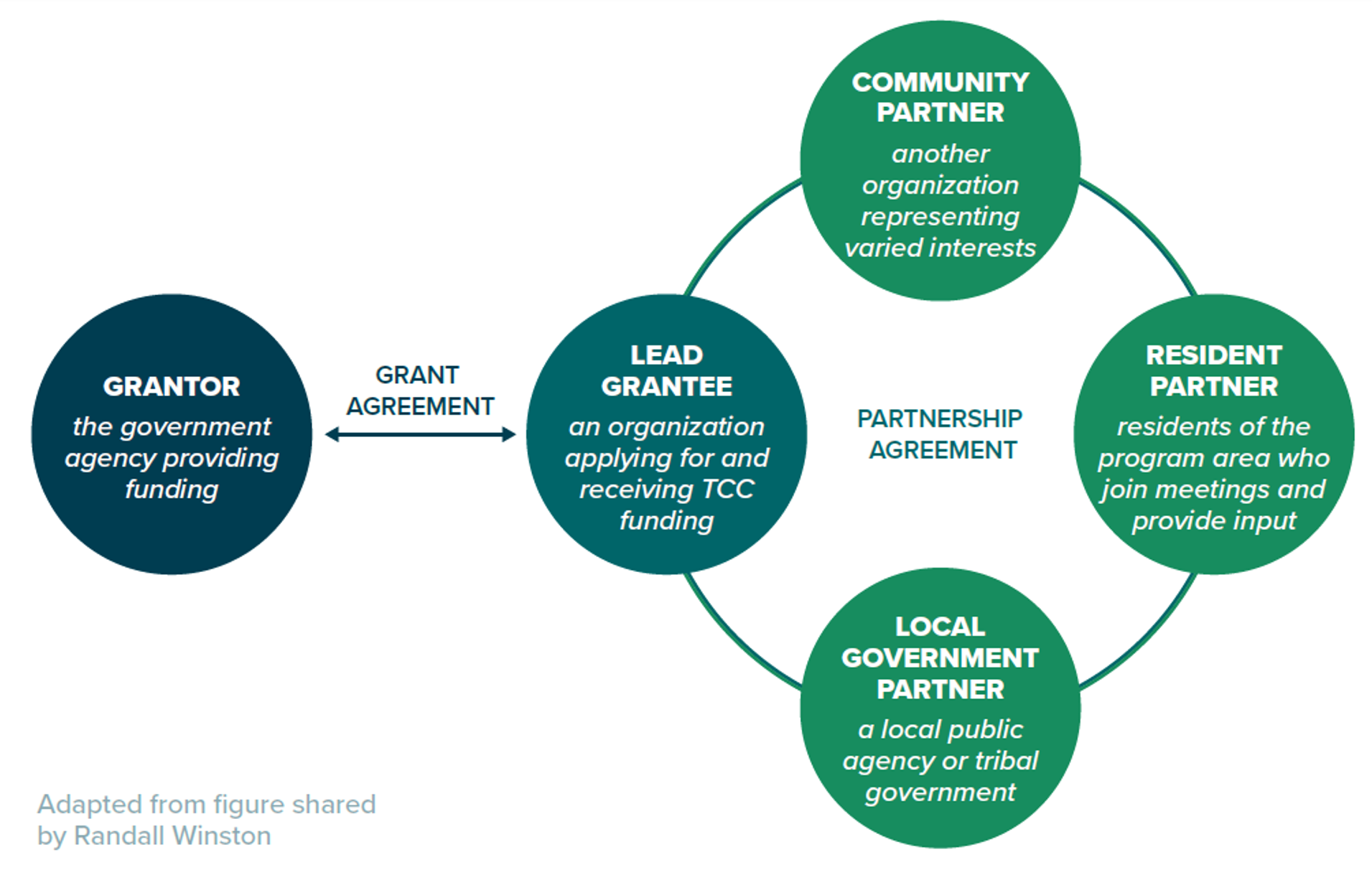SGC Catalyst Model Collaborative Governance Model: Authority and Accountability
To empower community members in decision-making, a collaborative governance structure must include robust mechanisms for transparency, oversight, and accountability. To be effective while advancing equity, a joint governance structure must have decision-making authority. Thorough accountability mechanisms can help ensure decisions result in action. These should include the responsibilities, expectations, communication systems, staffing plans, and adequate budget for each entity.
Outcomes
- Increases transparency regarding who and what is involved in decision-making
- Explicitly assigns and transparently exercises authority
- Ensures accountability through mechanisms built into the joint governance structure
How to Do This
Require program applicants to establish a collaborative and representative governance body with authority to oversee planning and implementation.
TCC’s Collaborative Governance Structure requires that the Lead Applicant and all Co-Applicants include residents and community-nominated members such as community-based organizations. Applicants must develop a Partnership Agreement signed by the Lead Applicant and all Co-Applicants that describes the governance, organization, and financial relationships of the Collaborative Governance Structure.
SOURCE: Cain et al. (2023), Pathways to Advance Equity in Federal Programs: Opportunities for Integrating California’s Strategies for Equitable Climate Investments
